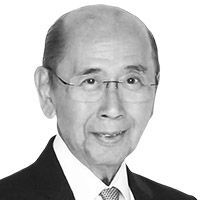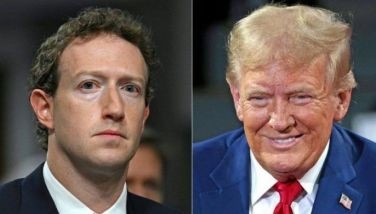Challenge of economic integration

Next year promises to be a coming-out party of sorts for the Philippines as a full fledged participant in the global race for economies to integrate their economy with the world in the hope of reaping the benefits of large borderless markets. Three important milestones are going to take place that will challenge the ability of the country to thrive – which is what economic integration promises - when it lifts those barriers and opens the economy to foreign competition. The question is – are we ready?
APEC
The first milestone is the holding of the Asia Pacific Economic Cooperation Summit where our responsibility as chair for 2015 begins in December this year when senior officials meet to lay the groundwork for APEC’s priorities and work program for the coming year. That year will culminate with the gathering of all 21 Leaders of APEC economies in Manila on November 2015. From its early years, APEC has been focusing on addressing the nuts and bolts in getting to those goals – dismantling barriers to trade and investments, promoting regulatory reform, and enhancing physical connectivity. This year, the chair (China) has proposed to move the date for this to be achieved from 2020 to 2025. On the Philippine’s shoulder will rest the direction which we would like APEC to take towards its stated goal of free and open trade in the Asia-Pacific region by the year 2020. APEC will therefore be looking to the Philippines for leadership in providing firm and clear direction.
AEC
The second milestone is the establishment of the ASEAN Economic Community (AEC) in 2015 which will “transform ASEAN into a region with free movement of goods, services, investment, skilled labor, and freer flow of capital.” In practical terms, this means all tariffs on goods traded between ASEAN members will be free of duty (with certain exceptions for delayed implementation) by 2015 and most restrictions to the flow of investments, services and skilled labor will be eliminated. Interviewed on the subject, PLDT chairman Manuel V. Pangilinan said bluntly that we are not ready for it…. that many of our industrial and agricultural sectors will not be able to compete. Many share this pessimistic view, including myself.
RCEP
The third milestone is the implementation of the Regional Comprehensive Economic Partnership (RCEP). The Philippines is a participant in RCEP, and yet it seems there is very little public awareness of what it is and what the current state of play is. For something that would have significant impact on our lives – imagine a unified market of 3 billion people in 16 countries which includes China, Japan, India, Korea, Australia and New Zealand and the 10 ASEAN members – I would have thought this would have attracted a lot of buzz in our media and in our business circles. And the target date for its implementation is already by the end of 2015!
Although mooted about as a possibility as early as 2010, it was perhaps alarm at the prospect of being left in the wake of a then rapidly evolving Trans Pacific Partnership (TPP) (backed by the US), that the leaders of the 16 participating countries hastily launched their own RCEP talks on the margins of the ASEAN Economic Summit in November 2012. The RCEP is aimed at creating a common preferential trade area among the 10 members of ASEAN and the six countries with which ASEAN has existing Free Trade Agreements (FTAs). The RCEP area would have a total population of over 3 billion people, a 27 percent share of global trade (based on 2012 WTO figures), a combined GDP of around $21 trillion (2013 IMF figures). When it was launched, observers had high hopes for the RCEP becoming a reality faster than the TPP because it was less ambitious in terms of trade issues covered, it utilizes a step-by-step approach and offered the prospect of development assistance, all of which make it easier for developing countries to join.
They set a date of completion by the end of 2015 and established ambitious milestones on the road to get there. The first milestone was to be an agreement on the coverage and depth of the tariff reduction with a target date of October 2013. However, the participants failed to reach an agreement on so-called trade liberalization rates, which indicate the scope of trade items for tariff reductions and elimination. While ASEAN members have different levels of liberalization with their prospective non-ASEAN RCEP partners, the differences are not very significant. It is between the non-ASEAN partners where there is the greatest difference. For starters, India and China do not have an FTA between them. China has no FTA with Japan and Korea also. Each one of them has reservations about free trade with the others.
The RCEP would potentially provide the biggest benefit to the Philippines when it is fully established (even though there are doubts that RCEP will meet the target date of December 2015). It will also pose the biggest threat to those uncompetitive sectors of our economy since not only will they be competing with other ASEAN countries, but with India and China as well – not just in goods but in services as well.
On the other hand, don’t put your money on TPP. Japan and the US have disagreements and President Obama does not have a Trade Promotion Authority to ensure US Congress approval.
As a believer in the merits of an open economy, I believe there is time to launch a concerted effort to plan for and implement measures to get us ready not only to cope with the consequences, but to enable us to take advantage of the enormous opportunities that are going to be made available by these various efforts to join the region’s economies into a seamless gigantic market. Seen in this light, the effort to amend the economic provisions of the Constitution would seem to be a step in the right direction if we are to compete for foreign investments that are sure to pour into our region as a result of these initiatives.
- Latest
- Trending






























